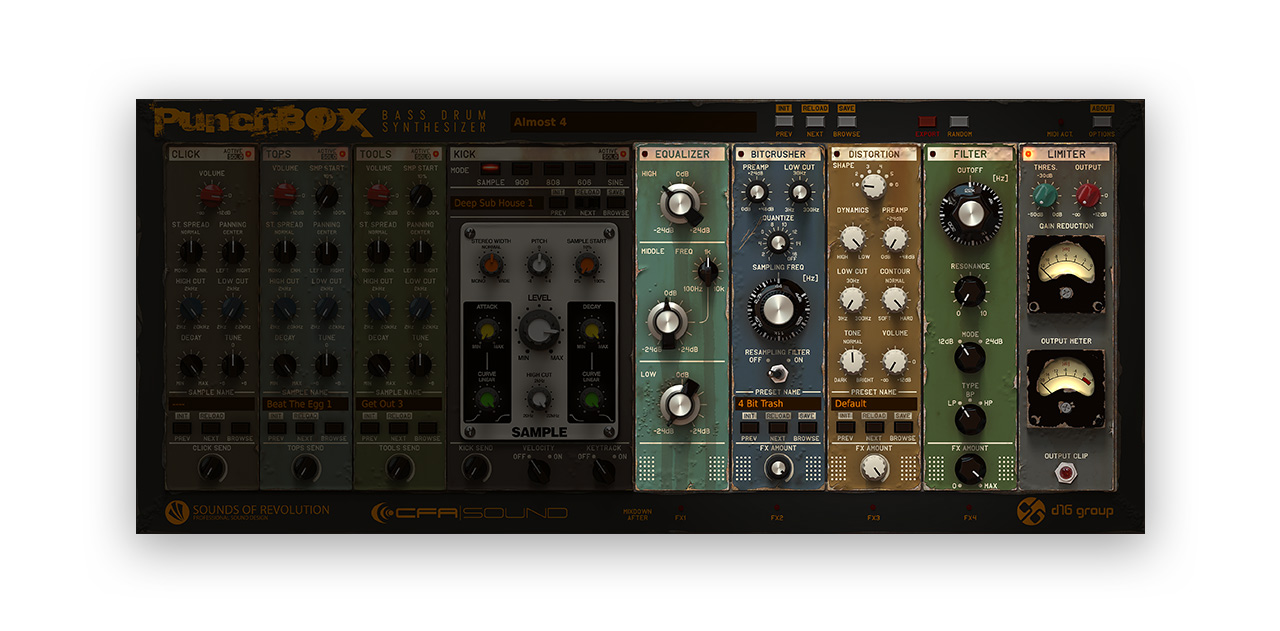Punchbox is D16 Group’s kick drum synthesizer that combines sampling, synthesis, and a host of effects modules to design the perfect kick drum sound for any track.
This feature guide will overview some of the essential components of Punchbox that you’ll want to be aware of to get the most out of this powerful plugin.
1. The kick generator

Punchbox lets you use either your own imported sample or a selection of popular synths (909, 808, 606, and sine) as the foundation of the kick’s tone. This generator’s UI and parameters alter based on what mode you’re in, but each offers you the ability to fine-tune the designated sound.
2. The generators section

The kick generator joined by the click, tops, and tools modules make up the generators section of the plugin. These generators work together to shape the kick’s tone. While the parameters within each module are nearly identical, let’s take a look at what the click, tops, and tools generators do individually:
- Click generates the kick drum’s initial accent that helps it cut through a mix.
- Tops controls how long this accent lasts, typically elongating the sustain of upper frequencies.
- Tools adds rumbles, background sounds, etc that can add flavor to the tone.
Pro Tip: Not feeling particularly inspired? Use the Random button to randomize some of the parameters in the generators section. Or, you can alternatively pull from the over 800 presets and 1100 samples included to quickly obtain a solid starting point.

3. The effects section

To the right of the kick generator lies the effects section, which provides you with signal processing effects that can be used to further shape the sound of your kick. Each effect has a series of rotary knobs that can be used to adjust its parameters, and the bitcrusher, distortion, and filter have an FX AMOUNT knob that can be used for some easy parallel processing. The five modules operate under the concept of cascade signal processing, which means the effects are applied from left to right.
Pro Tip: Click and hold the spotted areas located at the bottom of each module to reorder them in any arrangement you desire.

The cascade signal processing becomes a feature rather than a restriction with this drag’n’drop functionality. Note that the limiter cannot be reordered, since it’s an effect that should inherently be last in any processing chain to avoid unwanted clipping.

We hope you found this tour of Punchbox’s features useful! If you have a question, leave it in the comments below.
March 15, 2018

.svg)
.svg)




